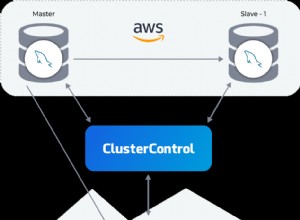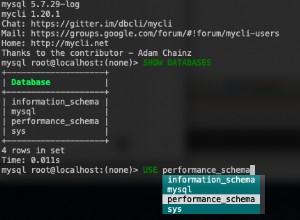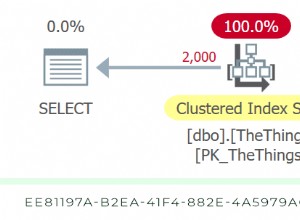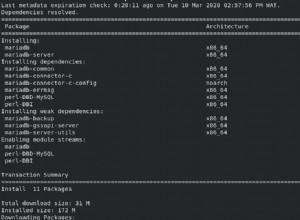MySQL weiß nicht, was eine PHP-Serialisierung ist. Sie könnten die IDs von Kategorien als Zeichenfolge im folgenden Format speichern:
2,4,5,10,...
Verwenden Sie dann eine Kombination aus SUBSTRING_INDEX()
und FIND_IN_SET() MySQL-Funktionen prüfen die Existenz von categories.id in ecommerce_products.catid :
SUBSTRING_INDEX(
SUBSTRING_INDEX(ecommerce_products.catid,
',',
FIND_IN_SET(categories.id, ecommerce_products.catid)
), ',', -1)
Um die Kategorietitel für jeden Produktdatensatz auszuwählen, müssen wir die Titel mit GROUP_CONCAT()
Funktion, also würde die letzte Abfrage etwa so aussehen:
SELECT p.id,
p.catid
GROUP_CONCAT(cat.title ORDER BY cat.id SEPARATOR '|') as 'categories',
p.manid,
p.name
FROM ecommerce_products AS p
LEFT JOIN categories AS cat
ON cat.id = SUBSTRING_INDEX(SUBSTRING_INDEX(p.catid, ',', FIND_IN_SET(cat.id, p.catid)), ',', -1)
-- more query...
GROUP BY p.id; -- Group the result to concatenate the categories titles
Bei diesem Ansatz müssen Sie möglicherweise $this->db->query();
Methode, um die Abfrage manuell auszuführen.
Hinweis:
Alternativ könnten Sie Folgendes für ON verwenden Aussage:
LEFT JOIN categories AS cat
ON p.catid REGEXP CONCAT('[,]{0,1}', cat.id, '[,]{0,1}')
Testfall
Hier ist mein Testfall für SQLFiddle :
SELECT p.id,
p.name,
GROUP_CONCAT(c.title ORDER BY c.id SEPARATOR '|') as 'categories'
FROM products as p
JOIN categories as c
ON c.id = SUBSTRING_INDEX(SUBSTRING_INDEX(p.cat_id, ',', FIND_IN_SET(c.id, p.cat_id)) , ',', -1)
GROUP BY p.id;
Ergebnis:
ID NAME CATEGORIES
-- --------- -----------
1 Product 1 Cat 1|Cat 3
2 Product 2 Cat 2|Cat 4
3 Product 3 Cat 1|Cat 4
4 Product 4 Cat 2|Cat 3




